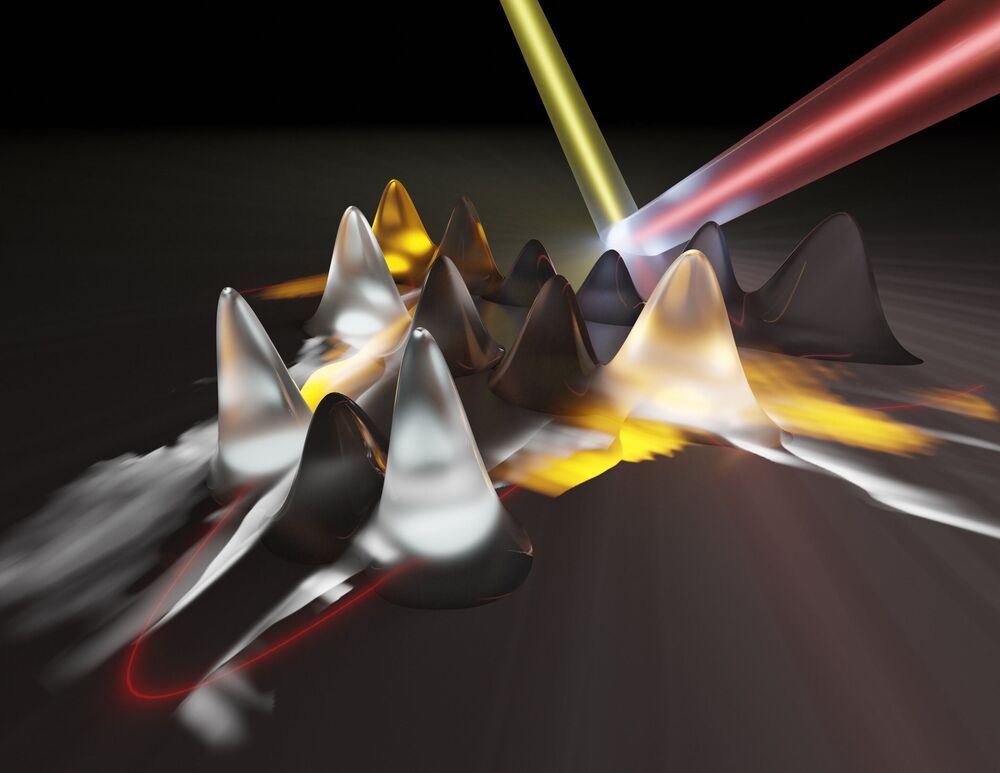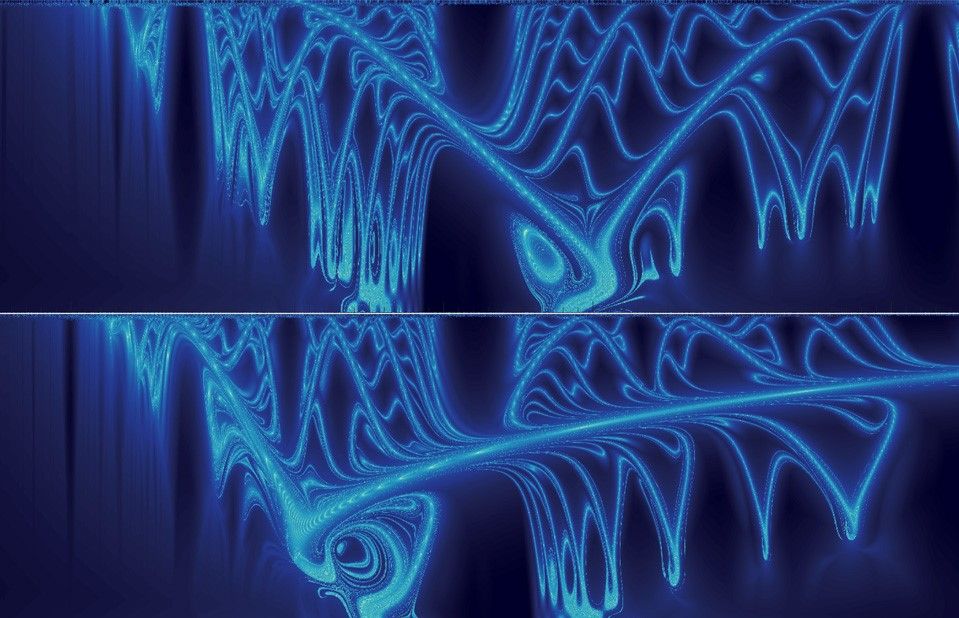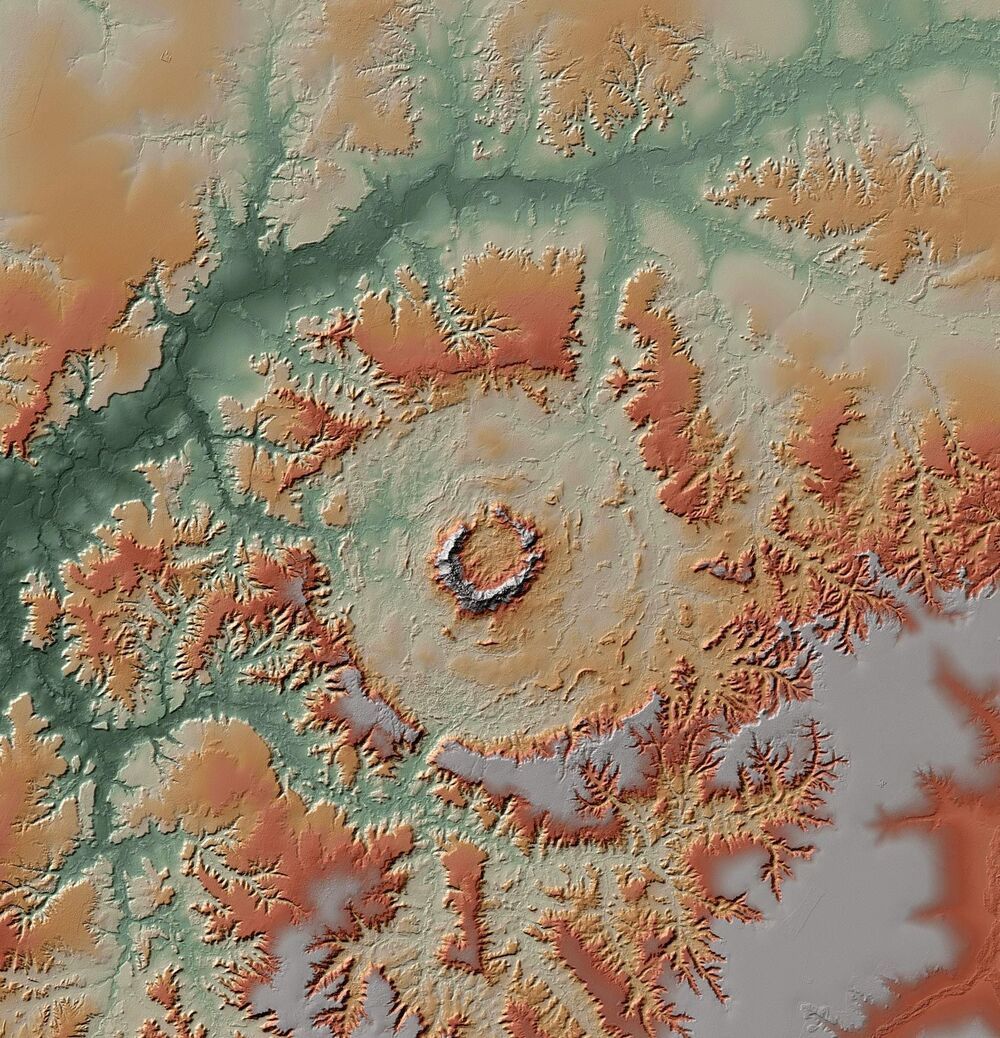All-sky surveys usually take years. This one took weeks.
Australian scientists tested all 36 receivers on the ASKAP radio telescope for the first time ever, mapping 85% of the sky in 300 hours.


A new tool that uses light to map out the electronic structures of crystals could reveal the capabilities of emerging quantum materials and pave the way for advanced energy technologies and quantum computers, according to researchers at the University of Michigan, University of Regensburg and University of Marburg.
A paper on the work is published in Science.
Applications include LED lights, solar cells and artificial photosynthesis.
Radar and LiDAR have been incredibly quick and effective tools for mapping and surveying the Earth’s surface from aircraft and satellites, but while they can deliver accurate readings through cloud and even forest canopy cover, they can’t tell you what’s below the surface of the sea. Seawater absorbs far too much of the signal.
Sonar remains the most effective way to map out the sea floor – but the vast majority of the oceans that form 70 percent of the Earth’s surface remain unmapped, because sonic waves have hitherto only been able to be sent out from underwater. Sound waves sent from air into water lose more than 99.9 percent of their energy in the translation; it’s why the outside world goes so wonderfully silent when you dive down to the bottom of the pool. The meagre remaining 0.1 percent of the energy does create a sonar signal, but that loses a further 99.9 percent of its energy upon coming back up from the water into the air.
Sonar is commonly used for submarine detection, among other things, by military forces the world over, chiefly using devices on the undersides of ships. But the closest things thus far to an airborne sonar system are “dippers” like Thales’ FLASH system; low-frequency, wide-band sonar systems that dangle from cables out the bottom of helicopters and dip into the sea below like noisy teabags. These methods are slow, expensive, and no good at covering large areas.

Drone privacy laws vary all around the world — and what might get you a great shot in one country could get you jail time in another.
Surfshark, a digital security firm, introduces Mapped: The state of drone privacy laws in (nearly) every country.
Drone privacy is serious business – and what gets you a great image in one country could get you a jail term in another. Finding these laws, however, is hit or miss – so this new research from Surfshark is a great place to start for world travelers.

Excerpts from the Red Folder.
If we had a “Physics paper title of the year award”, the 2020 winner would surely have to be “The arches of chaos in the solar system”, which was published this week in Science Advances by Nataša Todorović, Di Wu and Aaron Rosengren. In their paper, the trio “reveal a notable and hitherto undetected ornamental structure of manifolds, connected in a series of arches that spread from the asteroid belt to Uranus and beyond”. These manifolds are structures that arise from the gravitational interactions between the Sun and planets. They play an important role in spacecraft navigation and also explain the erratic nature of comets.
The paper is beautifully written, describing the manifolds as “a true celestial autobahn,” and going on to say that they “enable ‘Le Petit Prince’ grand tour of the solar system”. And if that has not piqued your curiosity, the figures are wonderful as well – with the above image being “Jovian-minimum-distance maps for the Greek and Trojan orbital configurations”.
The luxury watchmaker Bremont has released the Hawking Limited Edition watch that contains bits of a wooden desk once used by the late Stephen Hawking. The “exquisite chromometer” also contains pieces of a meteorite and is etched with a view of the night sky as seen from Oxford on 8 January 1942, Hawking’s place and date of birth. What is more, the serial number of the watch is printed on paper from a 1979 paper by Hawking that was cowritten by Gary Gibbons.
Scientists from NASA ’s Goddard Space Flight Center in Greenbelt, Maryland, and international collaborators demonstrated a new method for mapping the location and size of trees growing outside of forests, discovering billions of trees in arid and semi-arid regions and laying the groundwork for more accurate global measurement of carbon storage on land.
Using powerful supercomputers and machine learning algorithms, the team mapped the crown diameter – the width of a tree when viewed from above – of more than 1.8 billion trees across an area of more than 500,000 square miles, or 1,300,000 square kilometers. The team mapped how tree crown diameter, coverage, and density varied depending on rainfall and land use.
Researchers mapping the seafloor off the coast of Tasmania captured the moment a meteor flew through the atmosphere as a fireball and then disintegrated over the ocean.

Scientists have long sought a system for predicting the properties of materials based on their chemical composition. In particular, they set sights on the concept of a chemical space that places materials in a reference frame such that neighboring chemical elements and compounds plotted along its axes have similar properties. This idea was first proposed in 1984 by the British physicist, David G. Pettifor, who assigned a Mendeleev number (MN) to each element. Yet the meaning and origin of MNs were unclear. Scientists from the Skolkovo Institute of Science and Technology (Skoltech) puzzled out the physical meaning of the mysterious MNs and suggested calculating them based on the fundamental properties of atoms. They showed that both MNs and the chemical space built around them were more effective than empirical solutions proposed until then. Their research supported by a grant from the Russian Science Foundation’s (RSF) World-class Lab Research Presidential Program was presented in The Journal of Physical Chemistry C.
Systematizing the enormous variety of chemical compounds, both known and hypothetical, and pinpointing those with a particularly interesting property is a tall order. Measuring the properties of all imaginable compounds in experiments or calculating them theoretically is downright impossible, which suggests that the search should be narrowed down to a smaller space.
David G. Pettifor put forward the idea of chemical space in the attempt to somehow organize the knowledge about material properties. The chemical space is basically a reference frame where elements are plotted along the axes in a certain sequence such that the neighboring elements, for instance, Na and K, have similar properties. The points within the space represent compounds, so that the neighbors, for example, NaCl and KCl, have similar properties, too. In this setting, one area is occupied by superhard materials and another by ultrasoft ones. Having the chemical space at hand, one could create an algorithm for finding the best material among all possible compounds of all elements. To build their “smart” map, Skoltech scientists, Artem R. Oganov and Zahed Allahyari, came up with their own universal approach that boasts the highest predictive power as compared to the best-known methods.

Prof. Dr. Thomas Kenkmann, geologist from the University of Freiburg’s Institute of Earth and Environmental Sciences, together with mineralogist Prof. Dr. Wolf Uwe Reimold from the University of Brasilia, Brazil, and Dr. Manfred Gottwald from the German Aerospace Center (DLR) published an atlas providing a comprehensive overview of all known impact craters on every continent. The authors present the more than 200 terrestrial impact sites in high-resolution topographic maps and satellite images, complete with detailed geological descriptions and photographs of the crater structures and their rocks. They also explain the essential details of each impact event.
The formation of craters by asteroid and comet impact has always been a fundamental process in the solar system, explains Kenkmann. As the planets developed along with their moons, these impacts played an important part in accreting planetary mass, shaping the surfaces of planetary bodies, and later also influencing their development. And larger meteorite impacts eventually affected the development of life on Earth.
Today, mapping of what can still be seen of the impact structures on the Earth’s surface can be done by satellites in low Earth orbit. From 2010 to 2016, the DLR successfully measured the Earth’s surface with the radar satellites of the TanDEM-X mission. The acquired data allowed, for the first time, to derive a worldwide terrain model with a height accuracy of up to one meter. From this global digital elevation model the authors have been able to produce this complete topographic atlas of 600 pages with information about all terrestrial impact craters known to date.
Sony wants a bigger piece of the drone market. Today, the Japanese giant unveiled a project called Airpeak, which will “support the creativity of video creators to the fullest extent possible,” according to a cryptic press release. That makes it sound like Sony wants to take on consumer-focused drone makers such as DJI, Parrot and Skydio. Which makes a lot of sense, given Sony’s expertise in the compact and full-frame mirrorless camera markets. If you’re a vlogger or independent filmmaker that already uses Sony gear, you might be tempted by a drone with similar technology. If nothing else, it would make it easier to color correct and combine footage.
In the press release, though, Sony notes how drones have led to “workflow efficiency and energy savings in the industrial sector.” It adds: “Sony has assigned the ‘Airpeak’ brand to reflect its aspiration to contribute to the further evolvement and the creation of the unprecedented value through its imaging and sensing technology as well as 3R technologies (Reality, Real-time and Remote) in the drone area.” So it a consumer or enterprise play? We’re hoping its the former. The company already has Aerosense — a business-focused drone collaboration with ZMP — which specializes in surveying, capturing live events and creating maps from drone imagery.